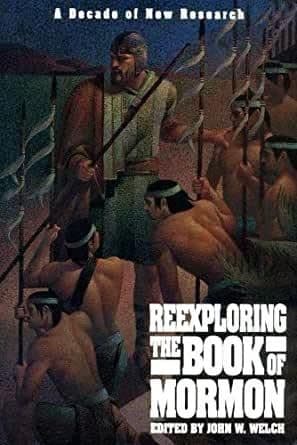Book
85 Chapters

Helaman 6:10 “Now the land south was called Lehi, and the land north was called Mulek, which was after the son of Zedekiah; for the Lord did bring Mulek into the land north, and Lehi into the land south.”
In 1967, John W. Welch first encountered the study of chiasmus in the New Testament. This led within a few weeks to his landmark discovery of chiasmus in the Book of Mormon, followed by the publication of several well-known articles and a book on this subject.1 Today, the study of inverted parallel structures in the Book of Mormon still continues. Most recently, another fine example of chiasmus was discerned in Helaman 6:7-13, the annual report for the sixty-fourth year of the Reign of the Judges, whose main features can be displayed as follows:
A | “And behold, there was peace in all the land” (6:7) | ||||||||
B | [Freedom of travel and trade in both lands is discussed (6:7–8).] | ||||||||
C | “And it came to pass that they became exceedingly rich, both the Lamanites and the Nephites; | ||||||||
D | and they did have an exceeding plenty of gold,and of silver, and of all manner of precious metals, both in the land south and in the landnorth” (6:9) | ||||||||
E | “Now the land south | ||||||||
was called Lehi, and | |||||||||
the land north | |||||||||
was called Mulek | |||||||||
which was after the son of Zedekiah; | |||||||||
for the Lord2 | |||||||||
did bring Mulek | |||||||||
into the land north, | |||||||||
and Lehi | |||||||||
into the land south” (6:11) | |||||||||
D | “And behold, there was all manner of gold in both these lands, and of silver, and of precious ore of every kind; | ||||||||
C | and there were also curious workmen, who did work all kinds of ore and did refine it; and thus they did become rich” (6:11). | ||||||||
B | [Economic prosperity in both lands is discussed (6:12–13).] | ||||||||
A | “And thus the sixty and fourth year did pass away in peace” (6:13). | ||||||||
This composition is remarkable in several ways. First, the report itself is beautifully executed. Words, phrases, and ideas that appear in the first half are repeated with precision and balance in the second half. This entry exhibits both fine quality and admirable length.
Second, since the chiasm encompasses the entire report for the year, this unifying structure strongly suggests that the account was written as a single literary unit that Mormon copied verbatim from the Large Plates of Nephi into his abridgment. Apparently the contemporary historian used chiasmus to record an extraordinary year in the annals of his people. The report documents a great change that occurred during the sixty-fourth year involving prosperity, free travel, and peace between both the Nephites and Lamanites. Significant trade and peace treaties must have been entered into in order for this kind of peace and prosperity to occur, since before this time, restriction on travel was the norm in Nephite society, as is evidenced by Mosiah 7:1; 8:7; 28:1; Alma 23:2; 50:25; and Helaman 4:12. Official decrees of this type may be related to the misharum edicts of the Near East that typically proclaimed freedom for slaves and granted “equity” for the land. In addition to marking an unprecedented turning point in Nephite history, using chiasmus would insure against additions to or deletions from the text, since any alteration would be strikingly apparent.
Third, and most remarkable, the center of this chiasm involves two individual words. At the very apex, the words “Zedekiah” and “Lord” stand parallel to each other, which is intriguing since the Hebrew word for “Lord” constitutes the theophoric suffix -yah at the end of the name “Zedekiah.”
Finally, it may be that other reports from antiquity were written in chiastic form. The Mesoamerican Chilam Balam of Chumayel, like Helaman 6, not only focuses chiastically on the migration of the people into the land they now occupy, but also similarly features, at the center, a word-play on the land’s name, as J. E. S. Thompson has noted.3
This text deserves to take its place among the finest examples of chiasmus in the Book of Mormon and beyond. Through understanding this masterful composition, we can better appreciate the precision and richness of Old World stylistic influences in the Nephite historical records.
Based on research by John W. Welch, May 1987.
Footnotes
1. For example, John W. Welch, ed., Chiasmus in Antiquity (Hildesheim: Gerstenberg, 1981); and “Chiasmus in the Book of Mormon,” BYU Studies 10 (Autumn 1969): 69-84. A full bibliography of publications about chiasmus is available from F.A.R.M.S.
2. In Hebrew, the theophoric suffix is yah = iah.
3. Personal correspondence to John L. Sorenson, June 13, 1970, referring to pp. 4-6 of Ralph Roys’s translation (see paperback edition, University of Oklahoma Press, 1973).
Book
85 Chapters
Items in the BMC Archive are made publicly available for non-commercial, private use. Inclusion within the BMC Archive does not imply endorsement. Items do not represent the official views of The Church of Jesus Christ of Latter-day Saints or of Book of Mormon Central.